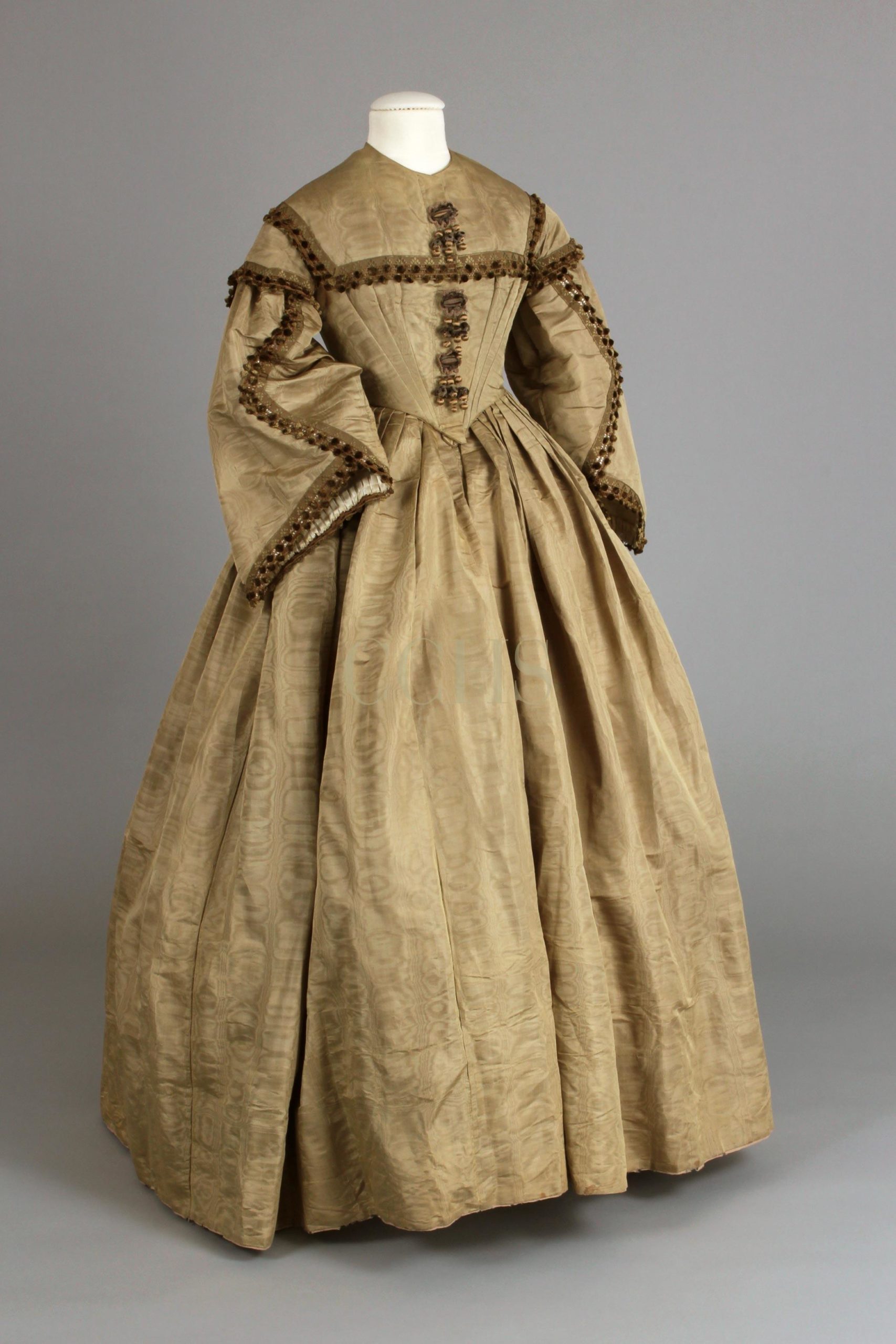
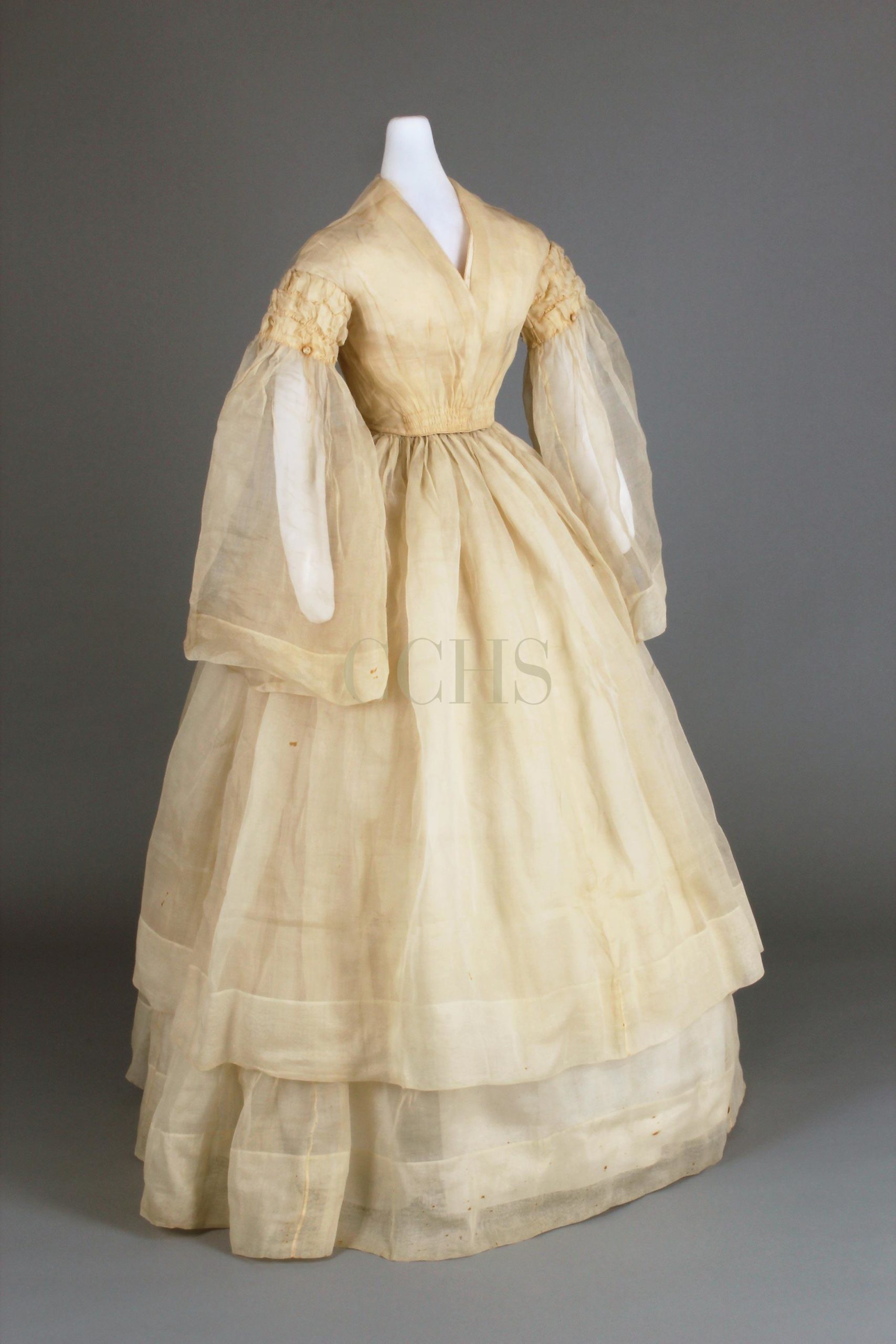
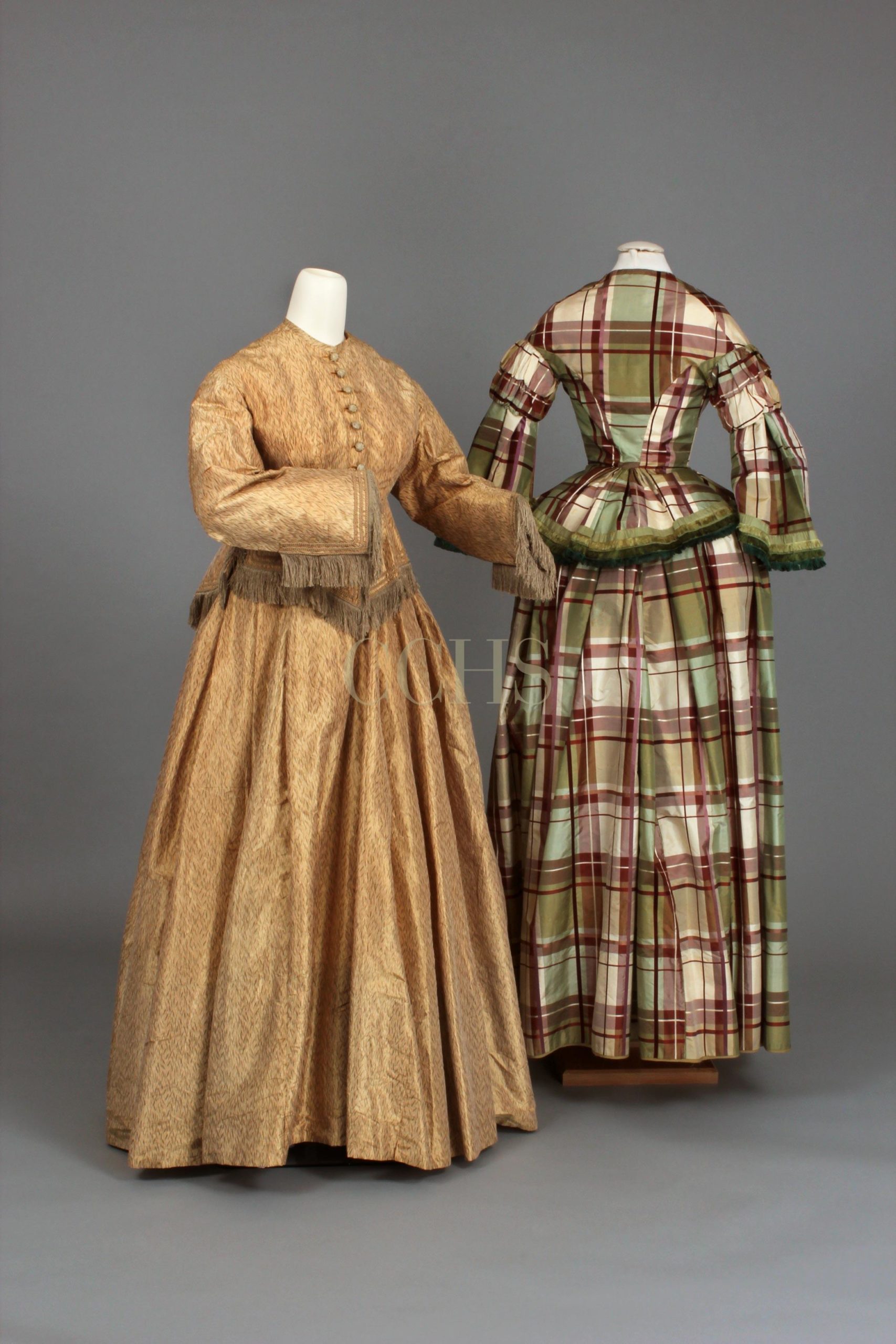
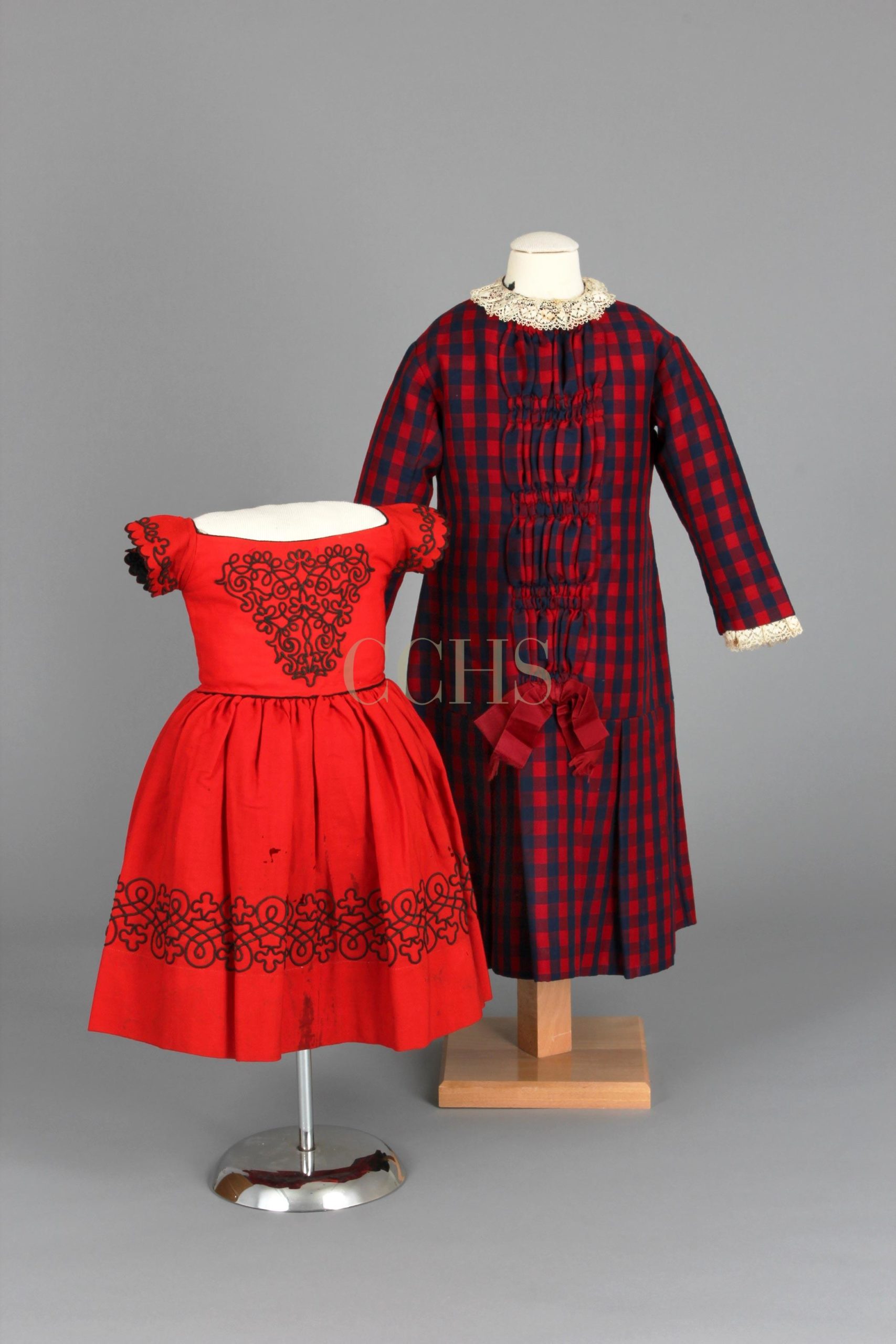
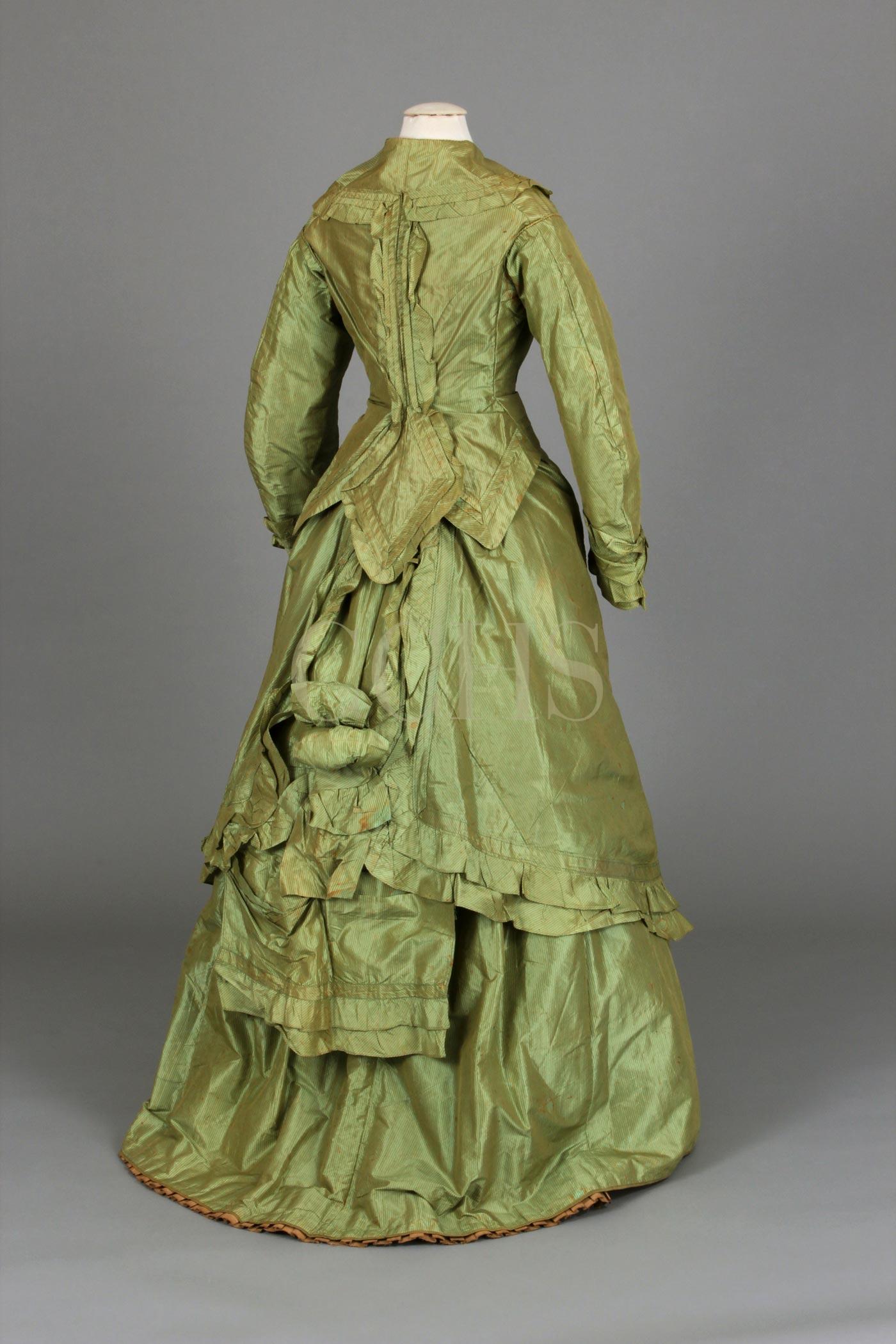
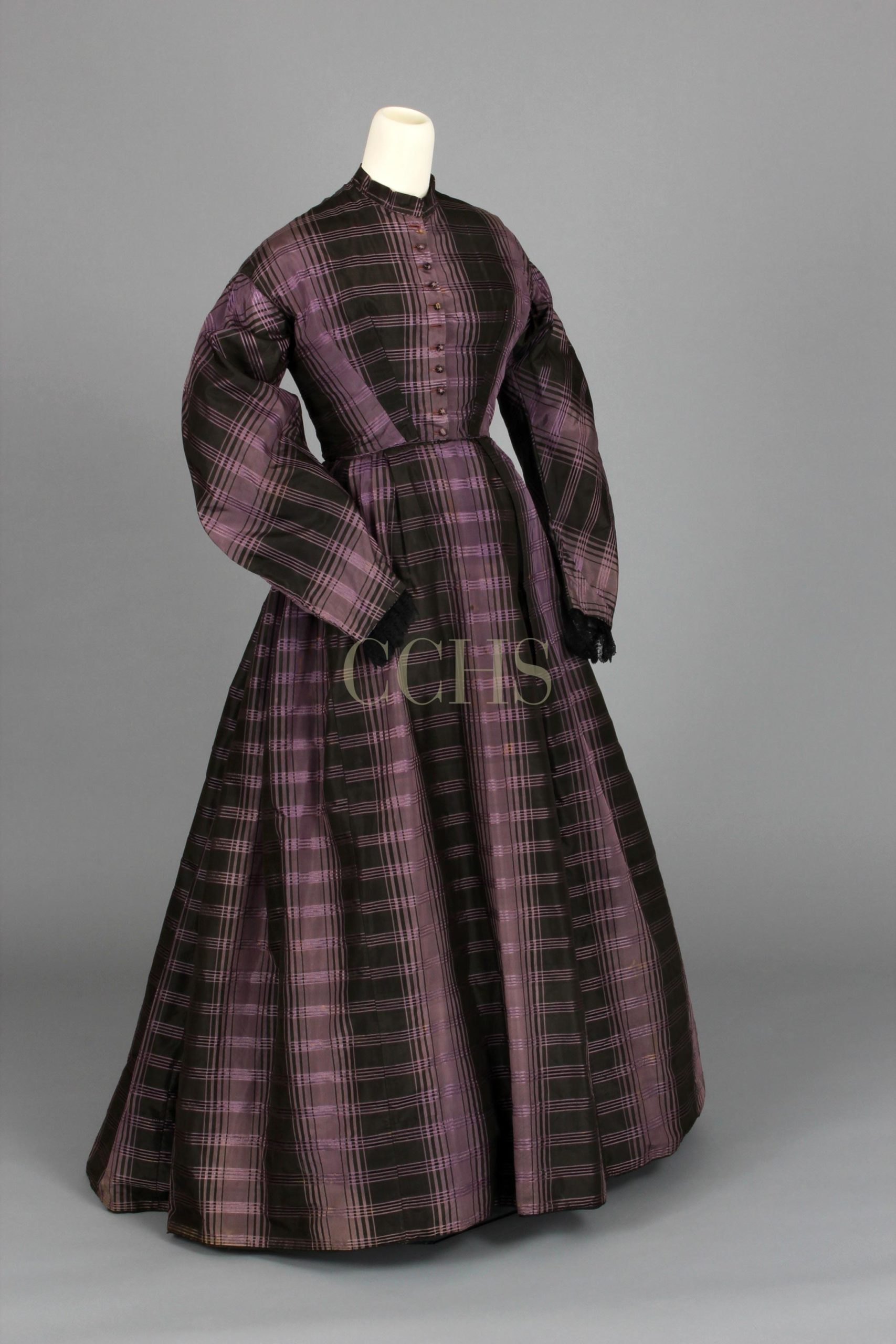
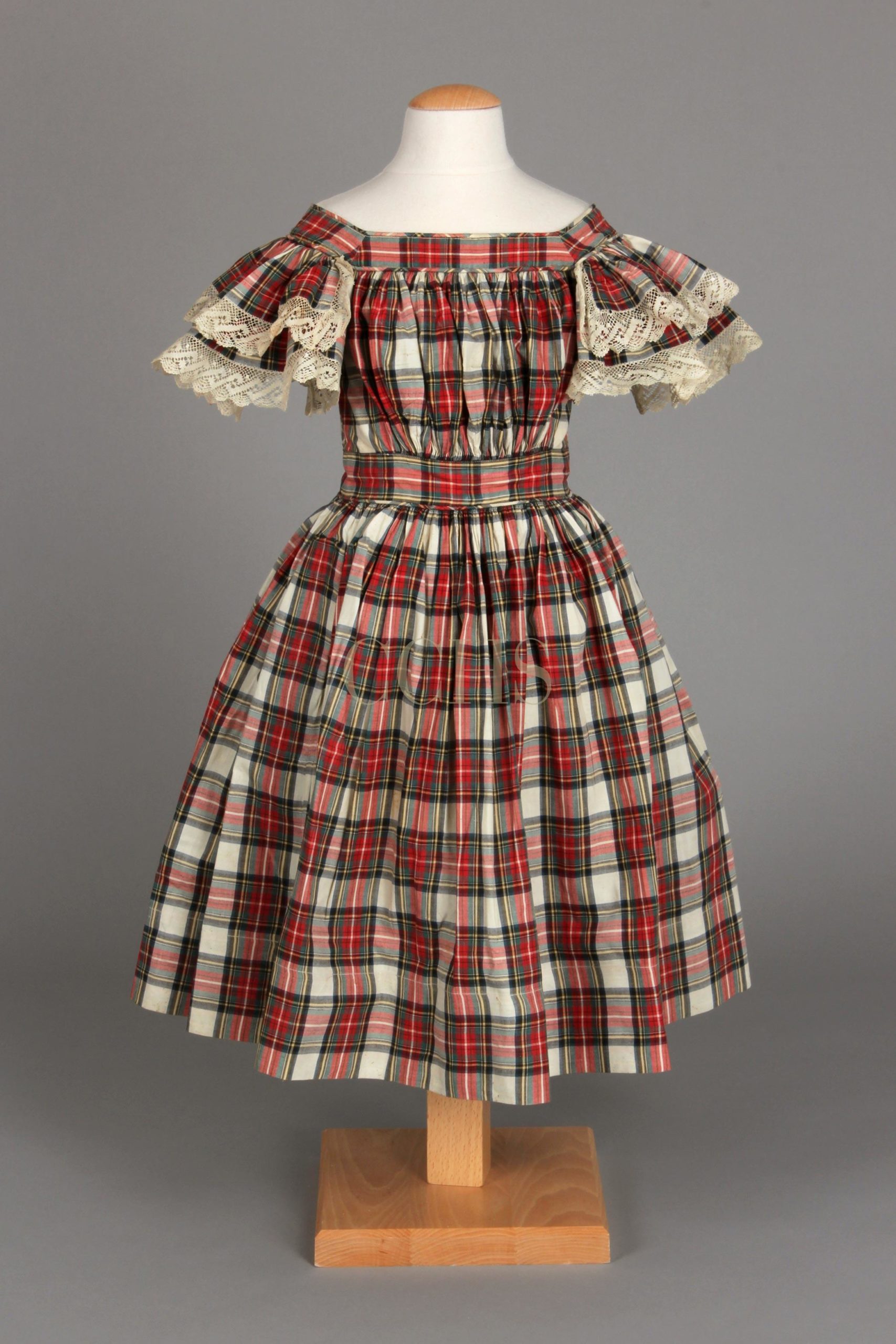
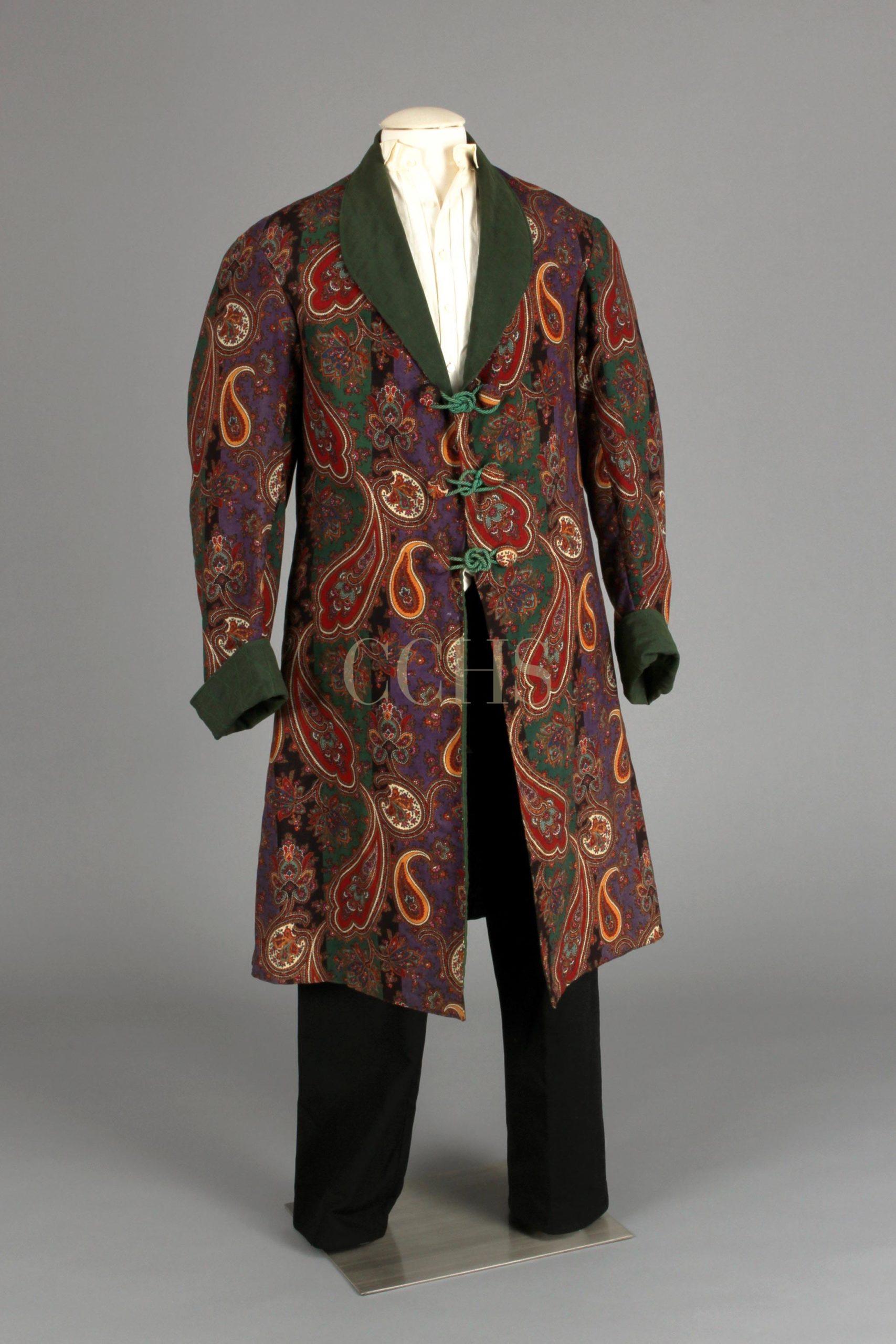
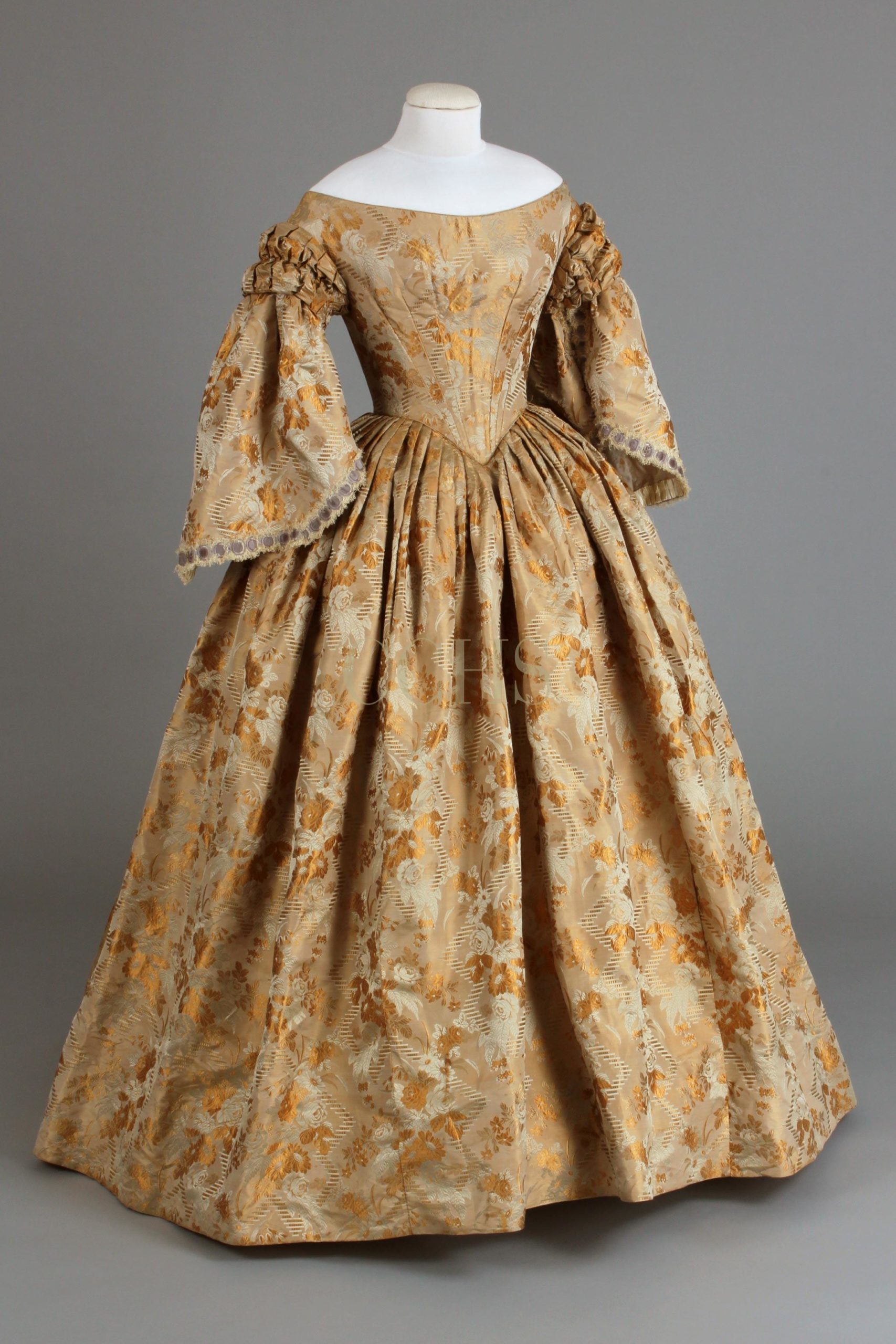
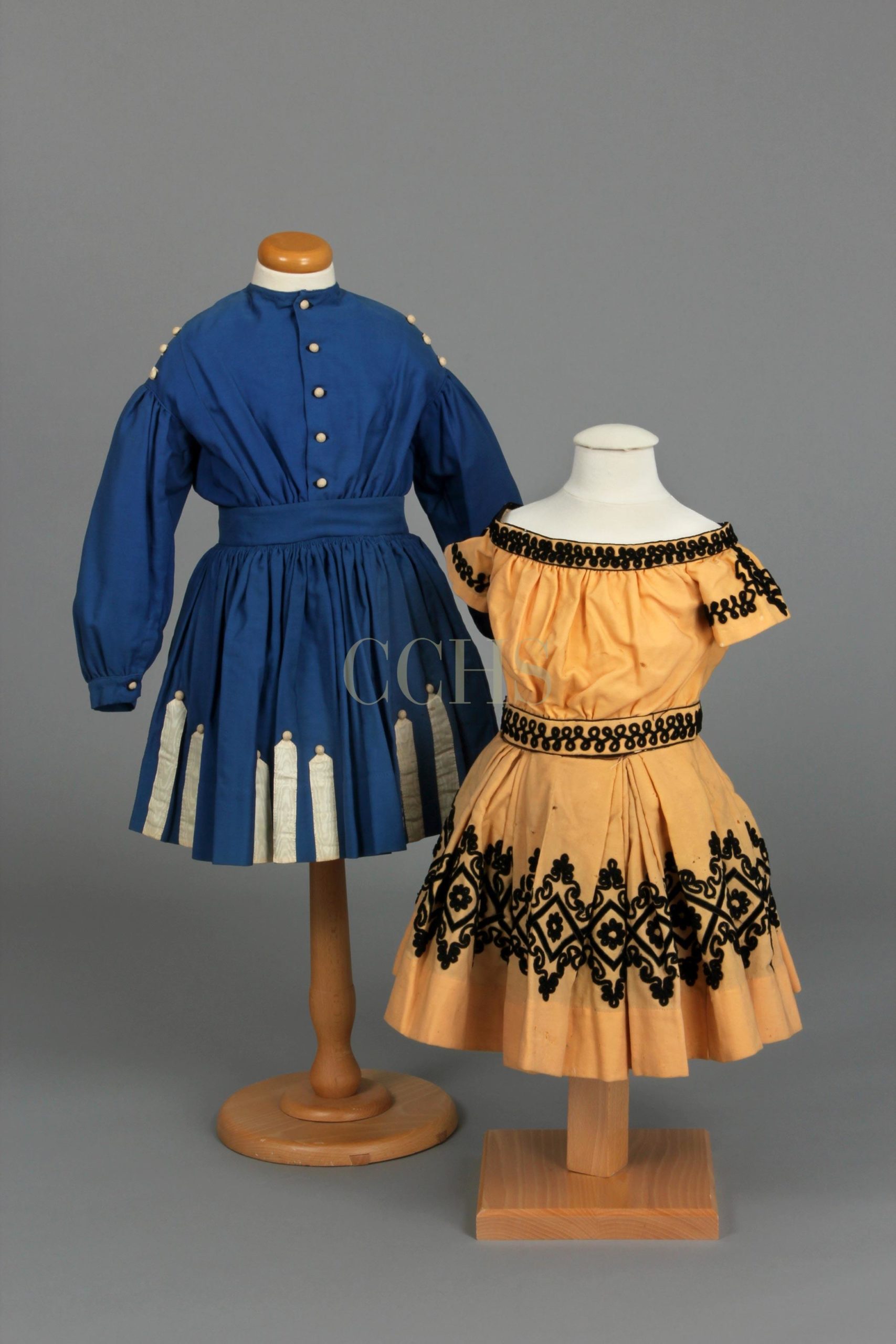
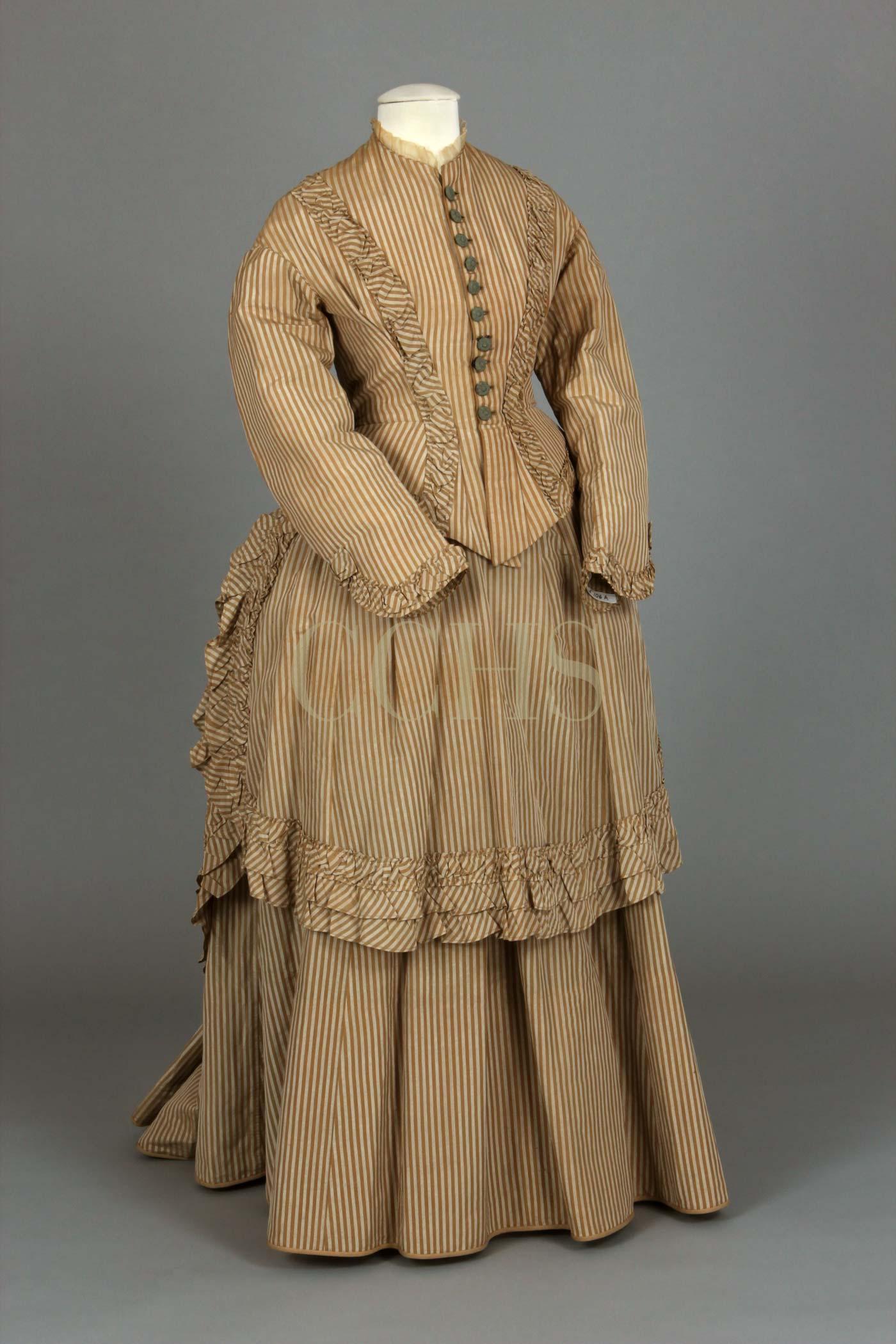
Dresses evolved from a large, circular skirt to a narrow skirt with a bustle that emphasized the back. With even tighter undergarments, dresses were more complex and remained largely handmade. The tightness also caused health issues that launched a clothing reform movement. Men’s clothing, by contrast, was simple and became the first ready-made clothing available in places like Wanamaker’s, Philadelphia’s first department store. Waistcoats became much more uniform and tended to match the suits.
The wealth created by economic opportunity allowed people to buy more things. This economic growth was partly influenced by industrial production for the Civil War. Postwar prosperity was a factor in helping Chester County weather later recessions.
In 1872, a state law was passed in Pennsylvania that allowed a married woman to purchase a sewing machine for her own use without the consent of her husband.
The brightly colored female profile of the 1860s evolved from round skirts to a more oval shape, created by wearing a bustle at the back. Men’s fashion, in contrast to women’s, was repetitive in style. Consumers could buy mass-produced suits in the relatively new department stores and have them tailored to fit. Most children’s clothing had a unique look by the mid-1800s.
Women’s fashionable undergarments included tightly laced, stiff, constrictive corsets. They were longer and had more bones than earlier examples. The tighter corsets compressed women’s bodies and sometimes injured internal organs. Some women reacted by advocating alternatives such as flannel liberty or union suits, a full length garment. It became popular for men as well. Children’s undergarments were also less restrictive.
Fashion and interior decoration had much in common. Bustles were made of wire mesh, coiled spring or horsehair, the same materials used to upholster furniture. The colors used in parlors also appeared in women’s dresses, made possible by the new synthetic dyes. This explosion of colors was also used in men’s accessories, such as with vests, ties, and, sometimes, hats.
In rural Chester County, clothing for daily life was utilitarian for everyone, although best dress did copy fashion. In towns, a shift was taking place toward a more business-oriented economy. This led in some cases to a greater distinction between home life and public life. It reinforced fashion differences for home and public dress. At the same time, the sewing machine both simplified construction and increased the expectation for more complex styles, and the need for dressmakers. Dressing for the camera in this new age of photography reinforced the expectations.
225 N. High Street, West Chester, PA 19380 | 610-692-4800
Sign up for our Newsletter